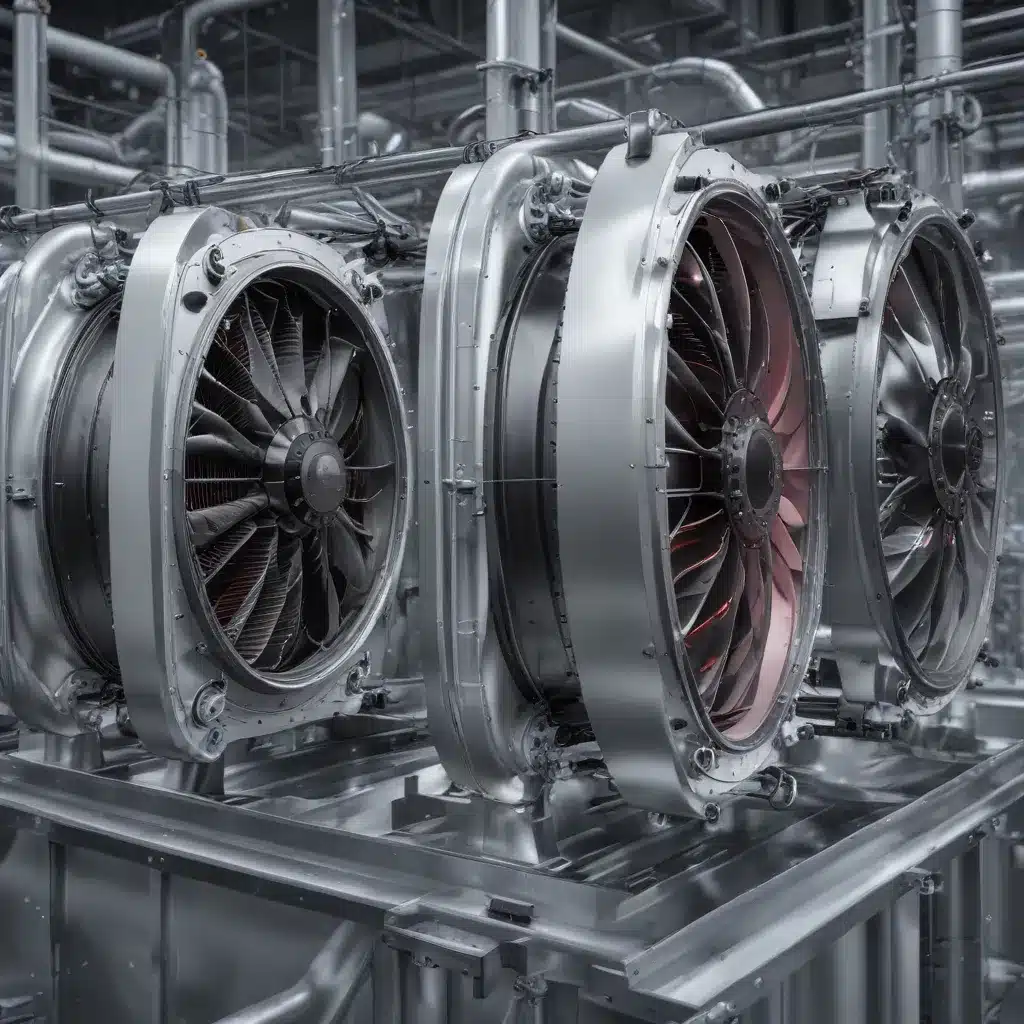
The Digital Engineering Ecosystem: Transforming Air-Cooled Heat Exchanger Design
In the rapidly evolving landscape of engineering and manufacturing, the integration of digital twins and simulation-driven design has become a game-changer for air-cooled heat exchanger optimization. By harnessing the power of computational science, high-performance computing (HPC), and artificial intelligence (AI), Altair HyperWorks 2024 empowers engineers to unlock new levels of innovation and efficiency in the design, performance analysis, and optimization of these critical thermal management systems.
The Rise of Digital Twins and Simulation
The fusion of digital twins and simulation-driven design has revolutionized the way engineers approach air-cooled heat exchanger development. Digital twins, virtual representations of physical systems, enable engineers to create accurate, real-time models that mirror the behavior of their heat exchanger prototypes. These digital replicas, integrated seamlessly with Altair’s comprehensive suite of simulation tools, allow for rapid exploration and optimization, significantly reducing the time and cost associated with physical testing.
Altair Twin Activate is a powerful platform that enhances the accuracy and clarity of digital twin models, ensuring engineers have access to the most up-to-date and reliable data. By integrating digital twins with the Altair Material Data Center, a comprehensive database of over 70,000 high-quality materials, designers can explore new and alternative materials throughout the product development life cycle, unlocking innovative design possibilities.
Harnessing the Power of Simulation-Driven Design
At the heart of Altair’s digital engineering ecosystem lies a suite of powerful simulation tools, each tailored to address the unique challenges faced by air-cooled heat exchanger designers and engineers.
Altair Inspire: Comprehensive Simulation-Driven Design
Altair Inspire reinforces its position as the most comprehensive simulation-driven design solution, empowering engineers to explore, analyze, and optimize air-cooled heat exchanger designs with unparalleled efficiency. Inspire seamlessly integrates powerful technologies like generative design and meshless simulation, allowing for rapid behavior prediction and maximizing design and manufacturing effectiveness while ensuring top performance.
Altair SimLab: Unlocking Electronics System Design Perfection
Altair SimLab accelerates the perfection of electronics system design, including critical components like fans and control systems within air-cooled heat exchangers. Through enhanced thermal analysis capabilities, users can ensure the reliable functioning of electronic components, evaluate long-term system behavior, and support “what-if” studies for optimizing component placement and shape, enhancing the design of experiments (DOE) process for electrothermal simulations.
Altair Flow Simulator: Advancing Thermal Analysis Precision
Altair Flow Simulator enhances model visualization and thermal analysis precision, benefiting the analysis of rotating machinery, including air-cooled heat exchanger fans. Improvements in heat transfer coefficient (HTC) modeling, velocity options, and support for rotating components significantly advance the capabilities for analyzing these critical thermal management systems, especially in the aerospace and energy sectors.
Altair nanoFluidX and ultraFluidX: Accelerating Fluid Dynamics Simulations
Altair’s flagship computational fluid dynamics (CFD) solvers, nanoFluidX and ultraFluidX, provide unprecedented speed and accuracy in simulating the complex fluid dynamics within air-cooled heat exchangers. These tools leverage advanced techniques like Smooth Particle Hydrodynamics (SPH) and Vortex Methods to enable engineers to accelerate design exploration, reduce turnaround times, and gain deeper insights into the intricate fluid flow behavior.
Integrating Digital Twins and Simulation for Optimization
By seamlessly integrating digital twins and simulation-driven design, engineers can unlock the full potential of air-cooled heat exchanger optimization. This holistic approach enables:
-
Accurate Virtual Prototyping: Digital twins, paired with Altair’s simulation tools, allow for the creation of high-fidelity virtual prototypes that closely mirror the performance of physical heat exchanger units, facilitating rapid design iteration and optimization.
-
Multiphysics Analysis: Altair’s suite of simulation software, including Inspire, SimLab, Flow Simulator, nanoFluidX, and ultraFluidX, enables comprehensive multiphysics analysis, addressing the complex interplay between fluid dynamics, heat transfer, structural integrity, and electromagnetic compatibility (EMC) within air-cooled heat exchangers.
-
AI-Powered Optimization: Leveraging the power of Altair’s AI and machine learning solutions, such as Altair physicsAI and Altair romAI, engineers can quickly explore design alternatives, identify optimal configurations, and generate predictive models that drive continuous improvement in air-cooled heat exchanger performance.
-
Streamlined Development Cycles: By seamlessly integrating digital twins and simulation-driven design, engineers can drastically reduce the time and cost associated with physical prototyping and testing, accelerating the development and deployment of innovative air-cooled heat exchanger solutions.
Enhancing Maintenance and Lifecycle Management
Digital twins and simulation-driven design also play a crucial role in enhancing the maintenance and lifecycle management of air-cooled heat exchangers. Altair Twin Activate enables the creation of digital replicas that closely mirror the real-time performance and condition of installed heat exchanger units, allowing for predictive maintenance, informed decision-making, and optimization of service intervals.
These digital twins can be further integrated with Altair’s advanced analytics and AI capabilities, empowering engineers and maintenance teams to anticipate potential failures, optimize asset utilization, and extend the overall lifespan of air-cooled heat exchangers. This holistic approach to lifecycle management ensures maximum efficiency, reliability, and cost-effectiveness for organizations relying on these critical thermal management systems.
Conclusion: Embracing the Digital Transformation
As the engineering landscape evolves, the integration of digital twins and simulation-driven design has become a pivotal strategy for optimizing air-cooled heat exchanger performance, reliability, and cost-effectiveness. By harnessing the power of Altair’s comprehensive digital engineering ecosystem, organizations can unlock unprecedented levels of innovation and gain a competitive edge in their respective industries.
Whether you’re a heat exchanger designer, a thermal engineer, or a maintenance specialist, embracing the digital transformation and leveraging the synergy between digital twins and simulation-driven design can propel your air-cooled heat exchanger projects to new heights of success.

